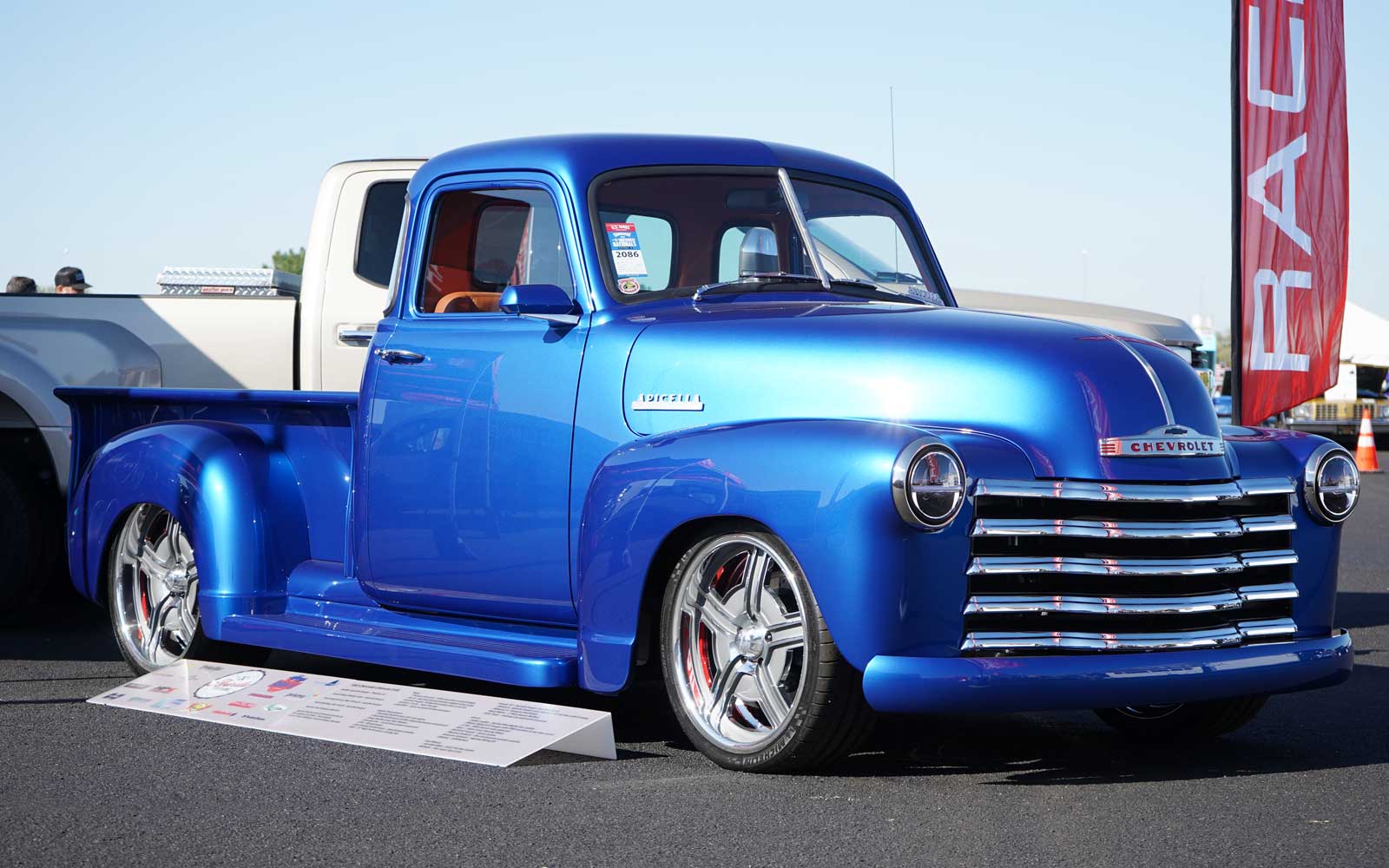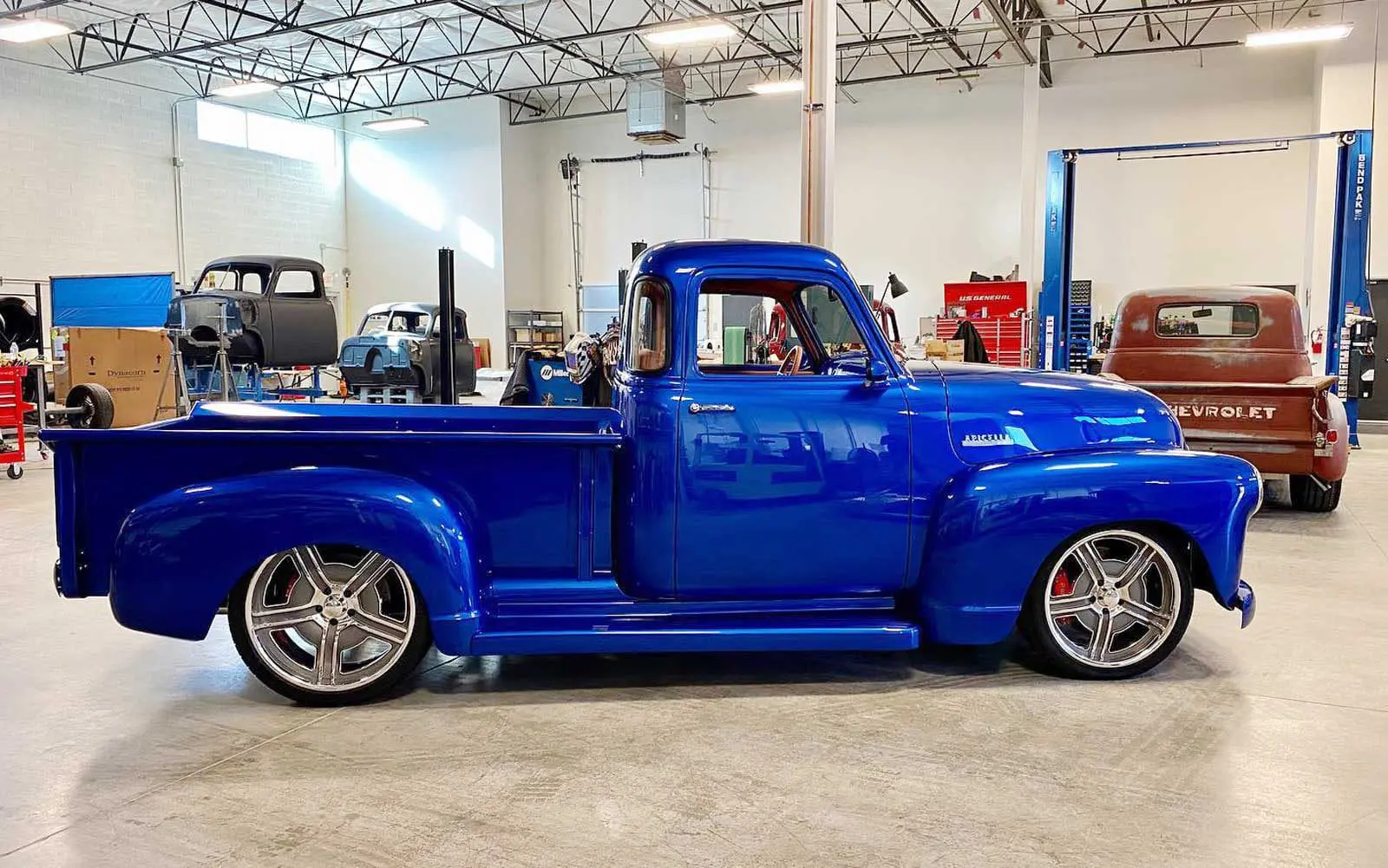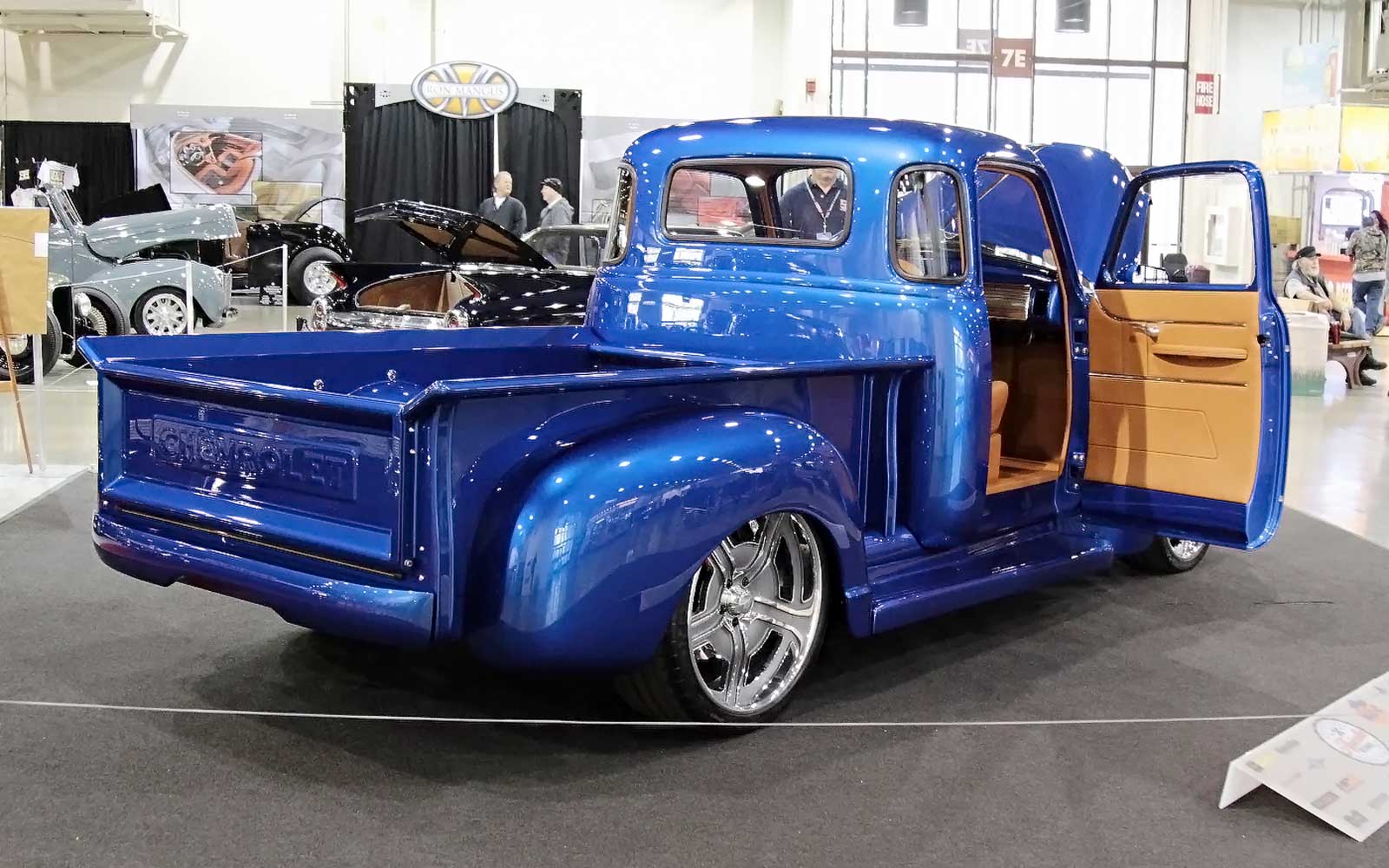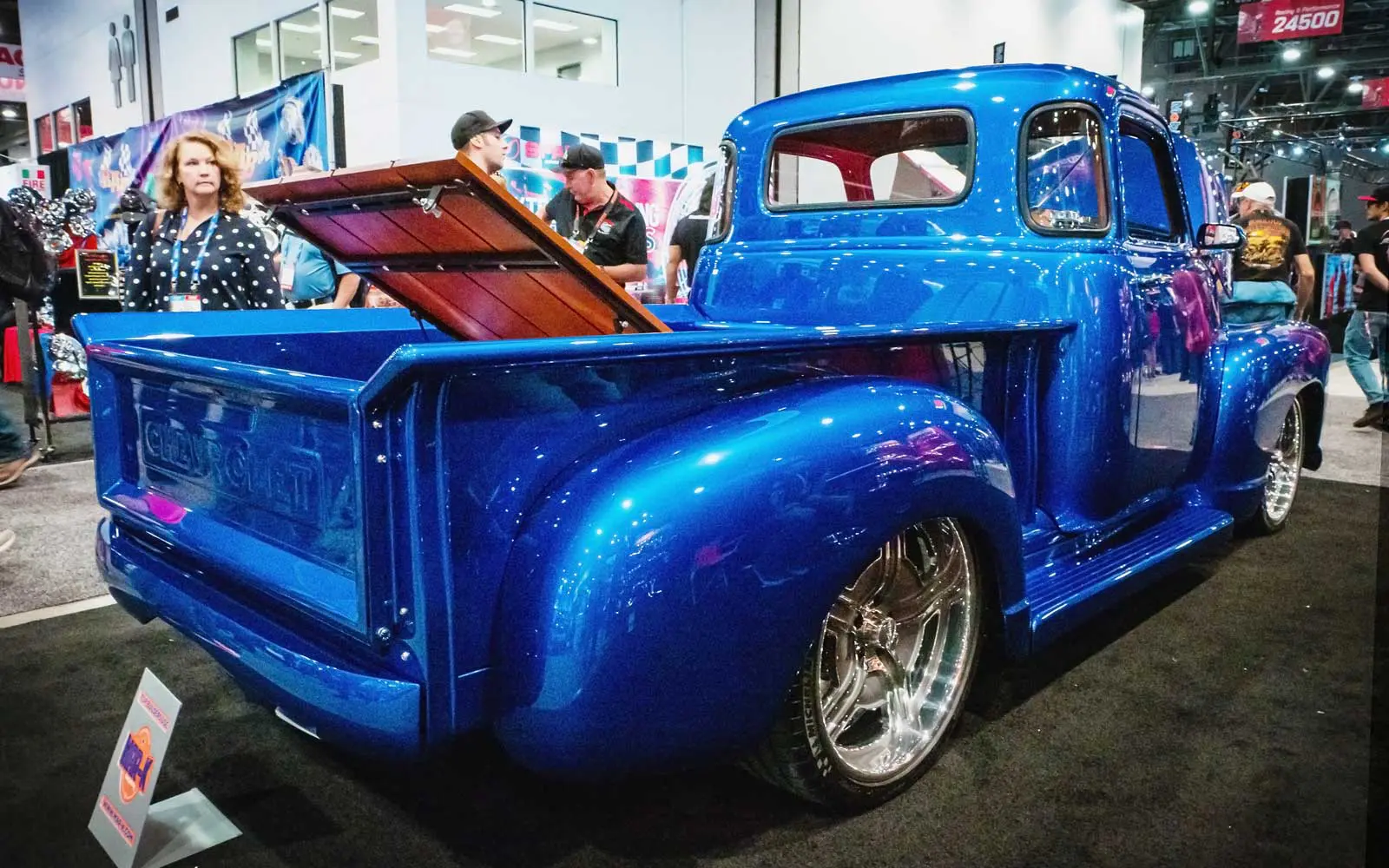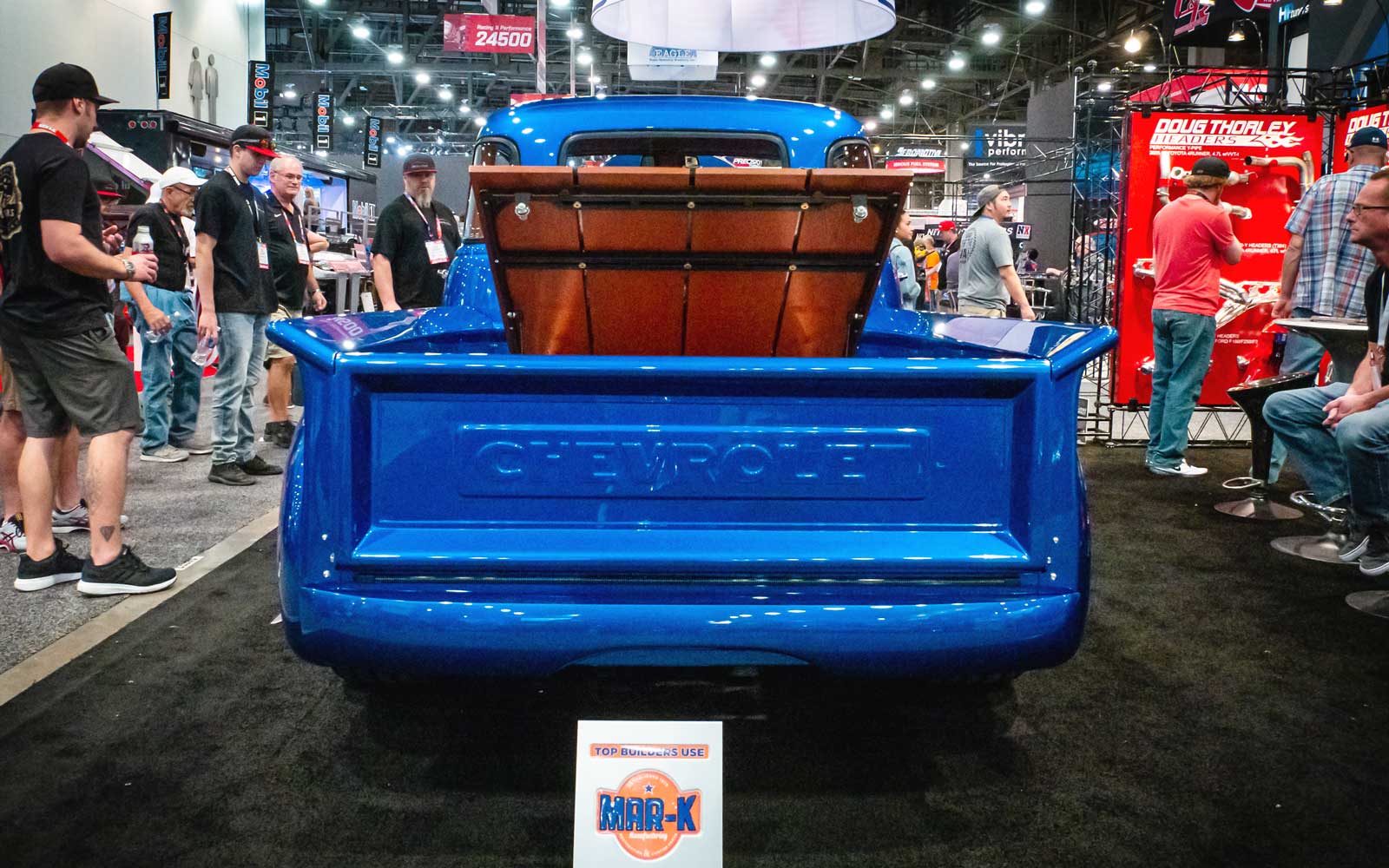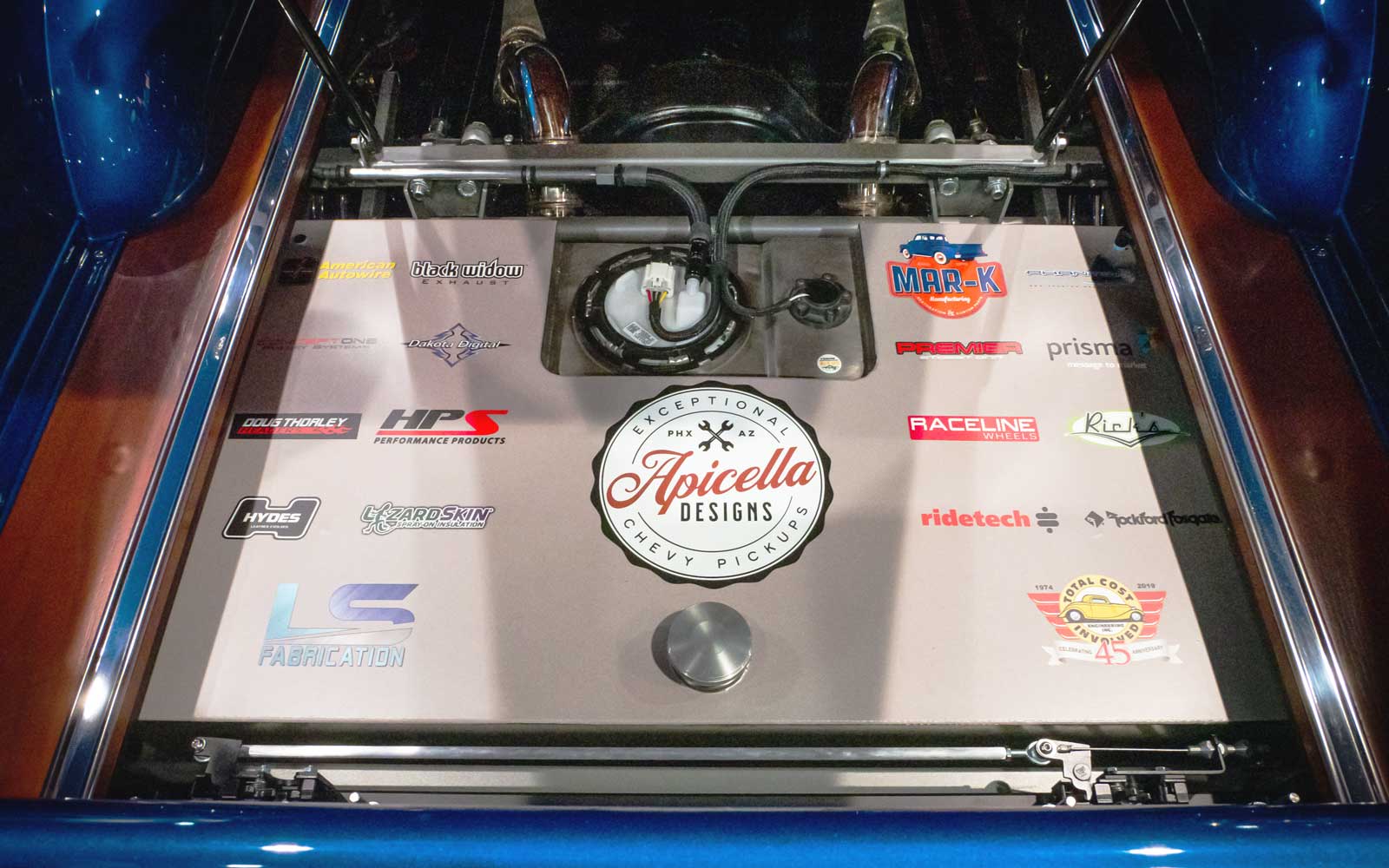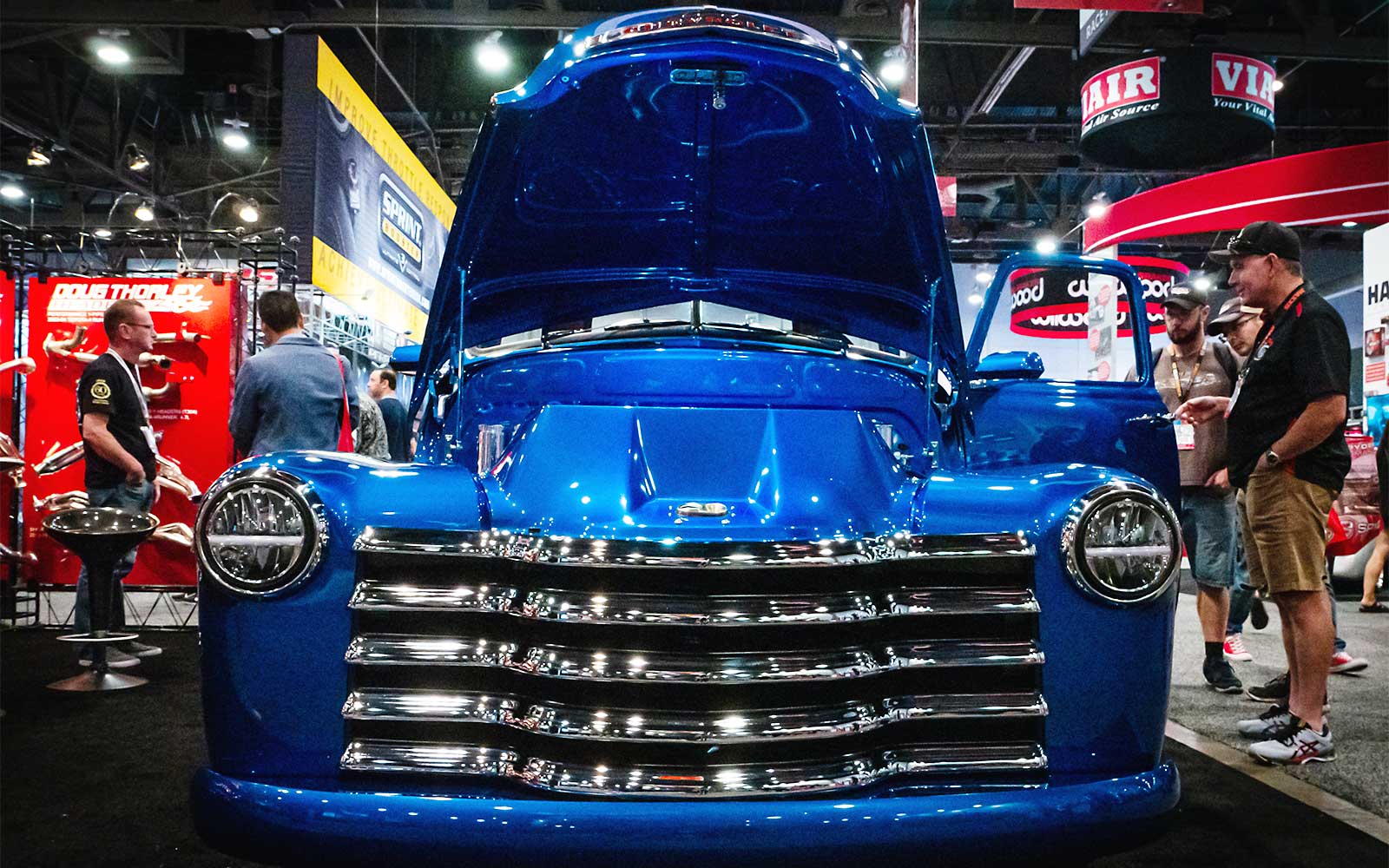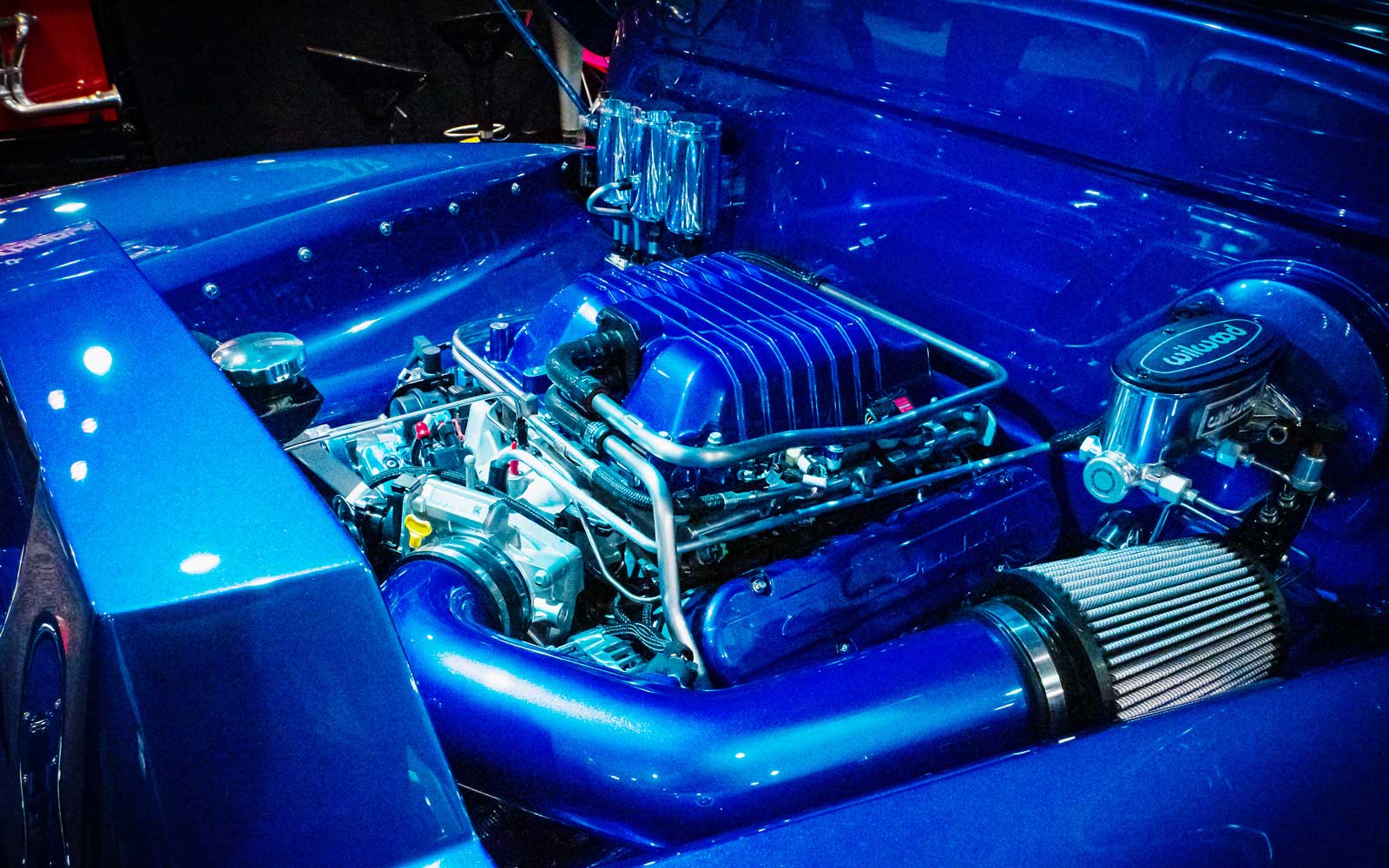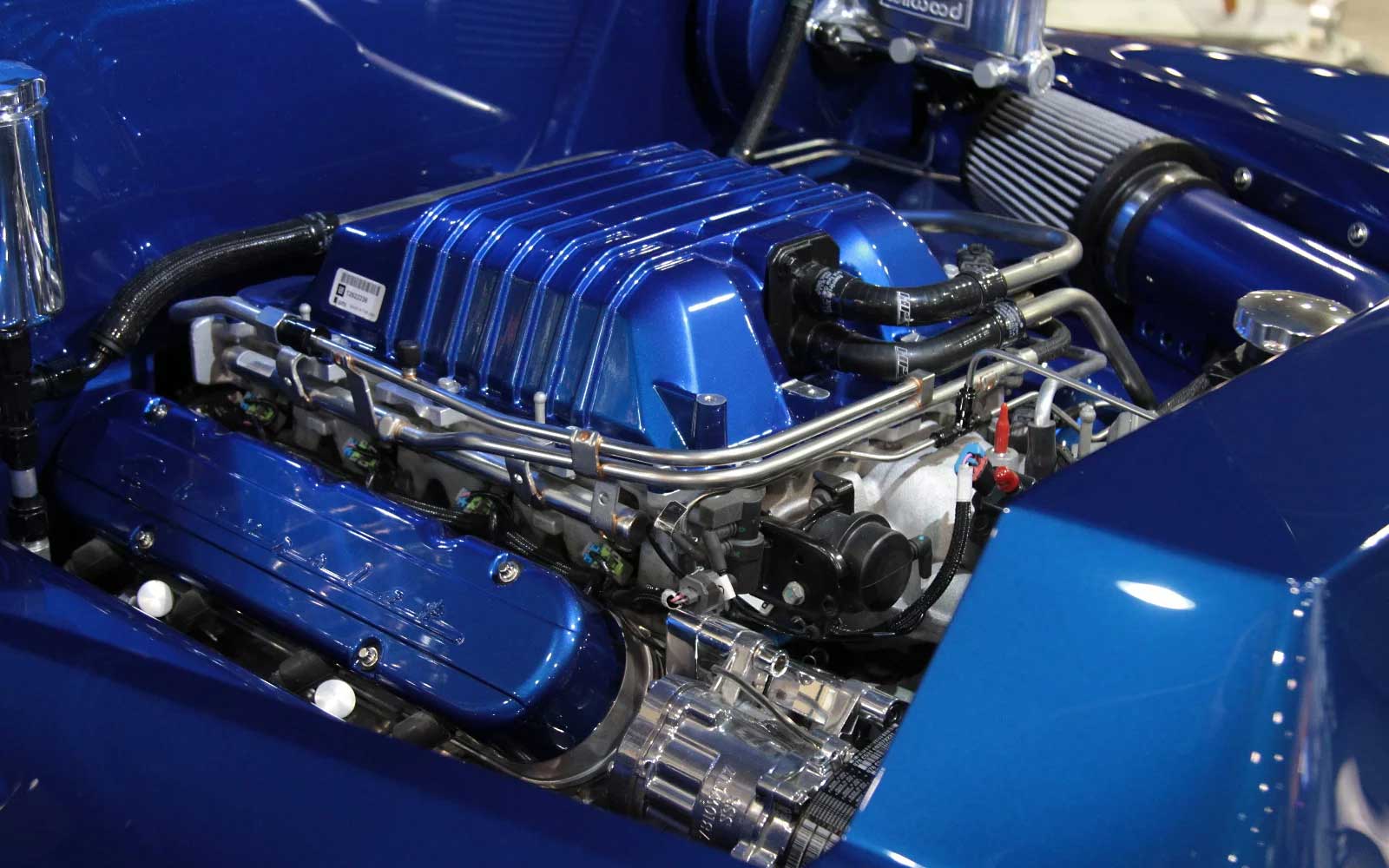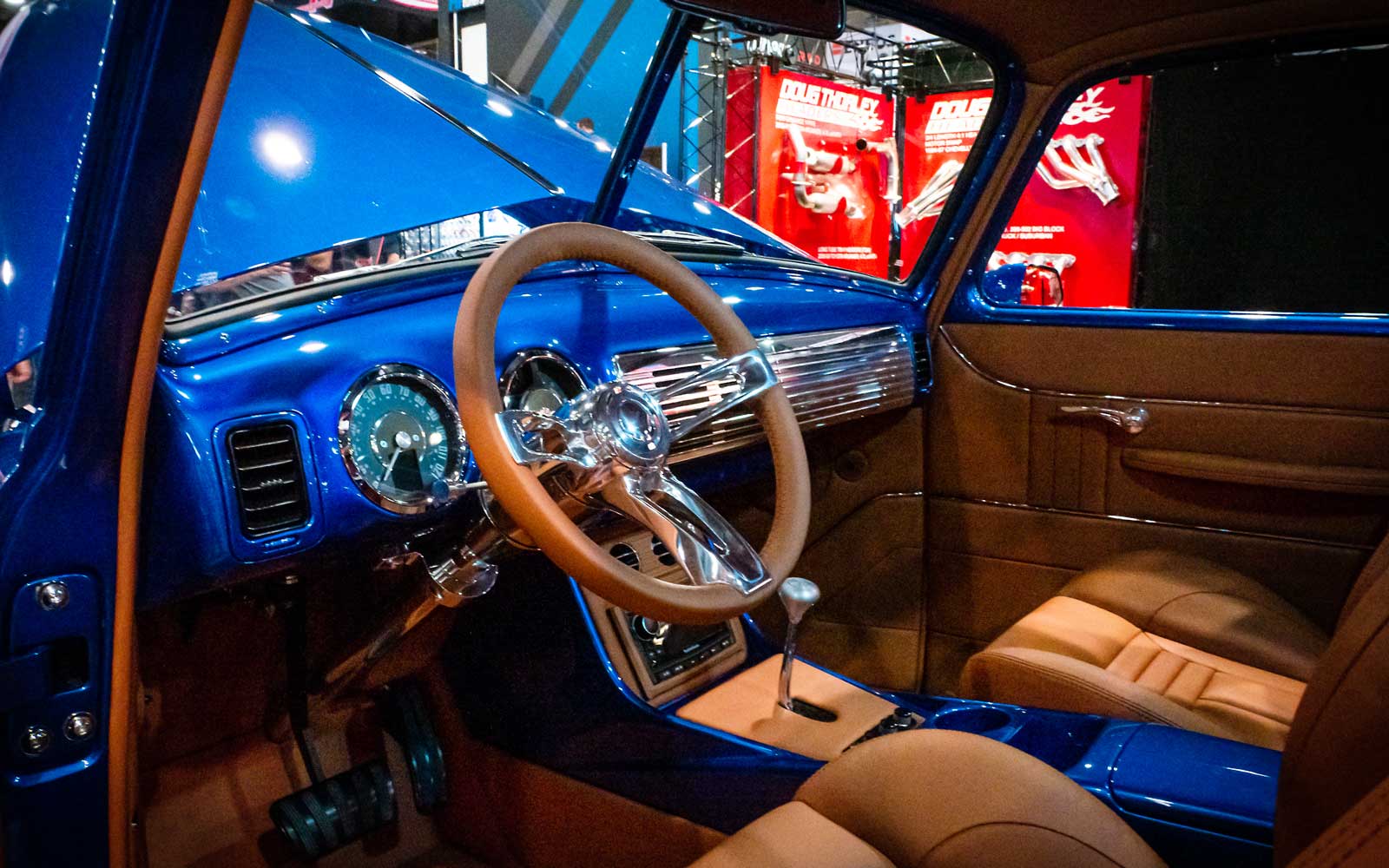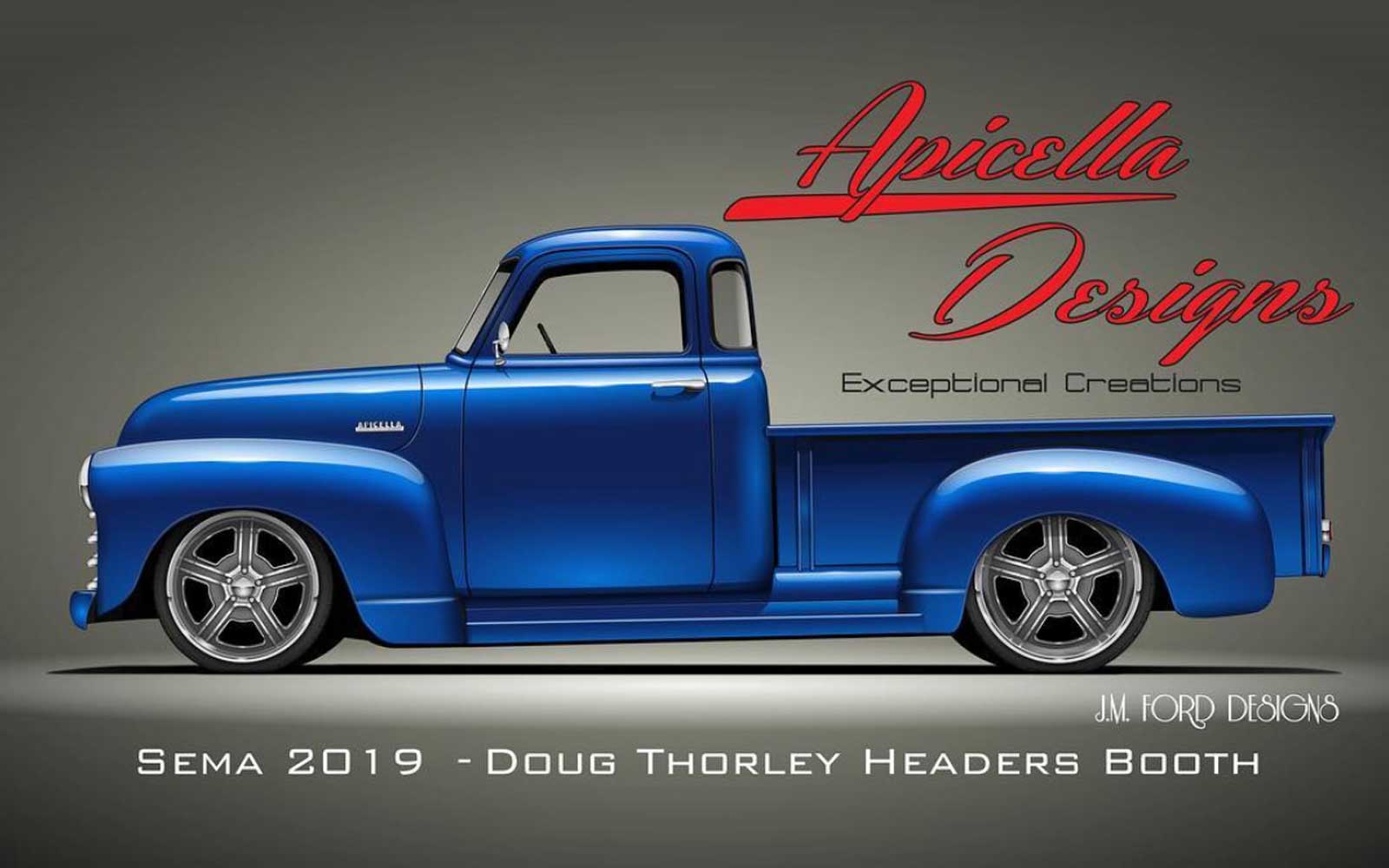Apicella Designs Ultimate 3100
“TCI is a great company; they have worked with us to design a package that fits our needs perfectly. They are by far the best chassis for the money and the fact that they keep evolving and making them better shows their commitment to the hotrod community. Its partnerships like this that allow us to build our Ultimate 3100 trucks.” – Brad Apicella, Apicella Designs
The Chevrolet Advance-Design was a revolution in truck design. Apicella Designs Ultimate 3100 is the definitive version of the 1952 Chevy truck.
When Chevrolet updated their AK Series truck just after World War II, they wanted something stronger, sleeker, and larger. Their creation became the Advance-Design that debuted in 1947 and lasted until 1955 but was the best-selling truck line in the US in that time frame. These trucks remain popular today and it’s not hard to see why. Their rounded design was forward-looking for its era in such a way it became the basis for the design of both the 2003 to 2006 Chevy SSR and 2006 to 2011 HHR. For Apicella Designs, these Advance-Design trucks are the calling card of owner, Brad Apicella.
Through his years in working with those trucks, it all has lead up to this vehicle – the Apicella Designs Ultimate 3100. “This was a build I have been planning for a while now,” said Brad, “I have always loved these 3100 trucks but they are one of the hardest to build to a show level.” What he’s referring to is where he typically finds these trucks. They have lived tough lives working for the farms and delivery companies that own them. They weren’t a super-refined chassis. They were utilitarian and ertainly never meant to drive at the limit or even just cruise to have fun. It didn’t stop Brad from building them.
“We have invested a lot of time and money into developing a well-rounded truck package,” Brad explained, “our motto has always been ‘exceptional creations’ and I push our team to produce nothing short of that.” That starts with the parts he uses, which are all brand-new pieces using modern techniques while achieving that classic look. “I have to explain that we use brand-new bodies licensed from GM,” he said, “they are built from a jig in Arizona and that has allowed us to offer even higher-quality trucks than when I started.” Instead of trying to make a 70-year-old part look brand new, he just starts with a new product.
This is especially true for the chassis. Again, these trucks were meant to work and carry heavy loads, so their stock handling is usually less than confidence-inspiring. “Total Cost Involved was one of the companies that we partnered up with from the start,” said Brad, “the chassis is the foundation to any build and I wasn’t content with the ‘one-size-fits-all’ options out there.”
The ten-month build of the Ultimate 3100 frame started with a TCI built chassis that uses a four-link rear suspension and an independent front suspension (IFS). Apicella Designs then uses their heavy-duty specification four-link bars fabricated by Ridetech with their R-Joint Heim joints. It also uses Ridetech coilovers on all four corners for far better road carving than Chevrolet ever dreamed of.
To make it a true, “Ultimate” creation, Apicella didn’t rebuild an old Chevy 350. Again, Apicella Designs does not use old parts. So, out went that tired engine and in went a brand new Chevrolet Performance “Connect and Cruise” LSA. The LSA comes topped with a 1.9-liter Eaton supercharger and pushes the 376 cubic inch engine to 580-horsepower and 556-lb/ft of torque out of the crate. Fuel from the stainless-steel Ricks Fuel Tank is fed by an OEM GM LSA fuel pump. A Concept One eight-rib front belt drive system does improve the looks of the stock LSA accessory drive.
The spent fuel and air gets sent out a pair of Doug Thorley long-tube, Tri-Y headers. It’s then fed down a custom three-inch stainless steel exhaust system with a pair of Black Widow Race Venom mufflers calming the sound, but only by a bit. The Connect and Cruise package includes a Chevrolet Performance 6L90E six-speed automatic transmission. It finally sends power out to a Currie nine-inch rear end with a 3.89:1 ratio and True-Trac differential.
An ultimate chassis needs ultimate grip, so Brad wrapped the Raceline Del Mar billet 20×8 front and 22×10 rear wheels in Michelin rubber. The front Pilot Super Sport tires are sized in 255/35R20 with the rear in 305/30R22. Just behind the wheels, you’ll find a set of Wilwood brakes with a six-piston set on the front spindles that clamp down on 13-inch diameter Wilwood rotors. The rear uses a pair of four-piston calipers.
The body of the Ultimate 3100 is a staple of Apicella Designs. The body starts off as a Premier Street Rods 1952 to 1953 all-steel cab. The bed features a Mar-K bed kit with a push-button tailgate system. The tilt bed is finished off with an oak wood bed with hidden fasteners. The rear of the bed also features an Apicella Designs radiused bed corner kit while the front was shaped to fit closer to the cab.
Looking into the interior, we see that Apicella worked with designer Sean Smith to flesh it out. An Apicella Designs signature dash treatment is where they began. The air conditioning vents are flush-mounted as are the dash inserts. A set of Dakota Digital RTX gauges fill in where the old gauges went. Brad also added a Dakota Digital BIM module that connects directly to the OBD-2 port and allows the use of TPMS sensors.
Ron Mangus Interiors was then tapped to fabricate the rest of the interior. Brad choose to use Hydes leather, an OE supplier for Bentley, using their new market tan leather. You see this material used on the modified TMI seats, center console panels, and new door cards. The Sparc Industries Triple Crown Round steering wheel rim also uses the new market tan leather.
On the new custom fiberglass center console is a Lokar tap shifter while a Rockford Fosgate stereo system pumps out music above that amazing LSA engine note. “We got a little creative on this truck and ended up making our best stereo system to date,” says Brad. It runs a set of Rockford Fosgate 6.5-inch T4 component speakers with a T1 shallowly loaded into a ported enclosure. A Rockford Fosgate T100X5AD compact amplifier sends the signals out to those speakers while a Rockford Fosgate PMX-8BB hideaway control box and PMX-8DH remote screen is also located in the center console.
“This build was always intended to be our shop demo truck and allow people to see the quality and craftsmanship we can put out,” said Brad, “It was our way to show the world what Apicella Designs is capable of.” He then added, “Trucks of this caliber always push my team and myself to come up with better solutions to challenges we face along the way. It’s amazing to me how, even after all the builds we have done, that the next build seems to be even more exceptional than the last.” If there is one thing that can be said, they made sure that this truck lived up to its namesake.
SALES: 800-984-6259
TECH: 855-693-1259

